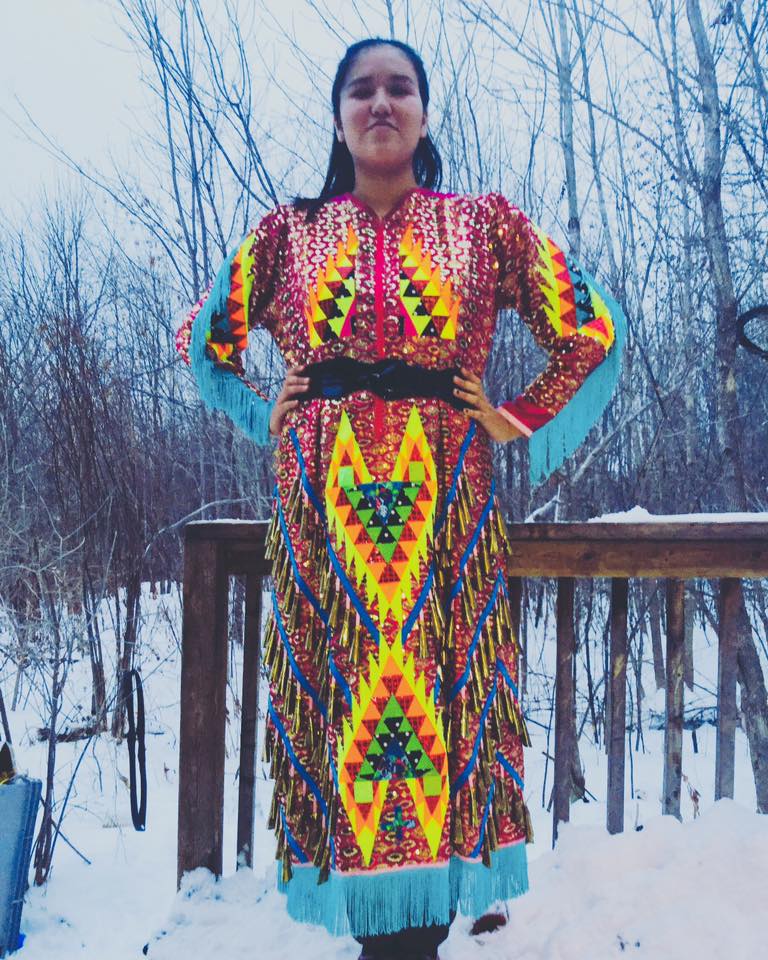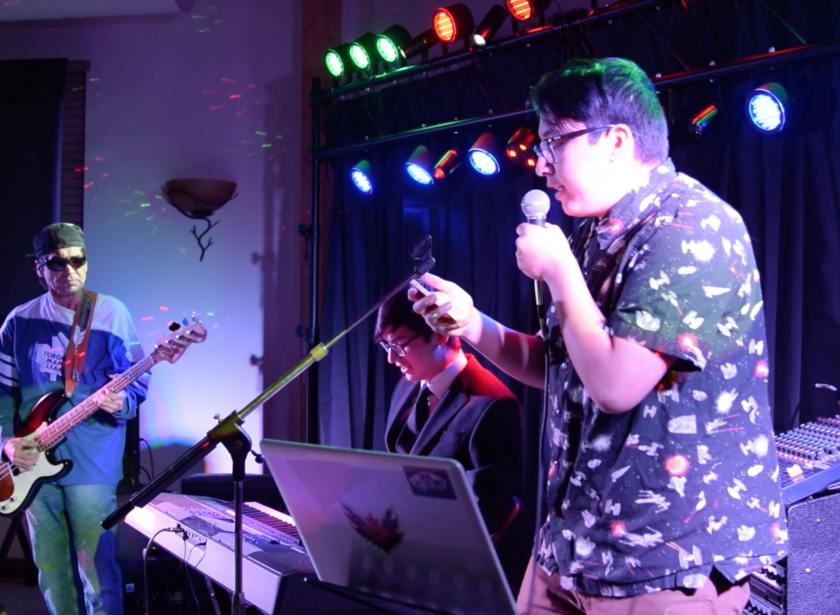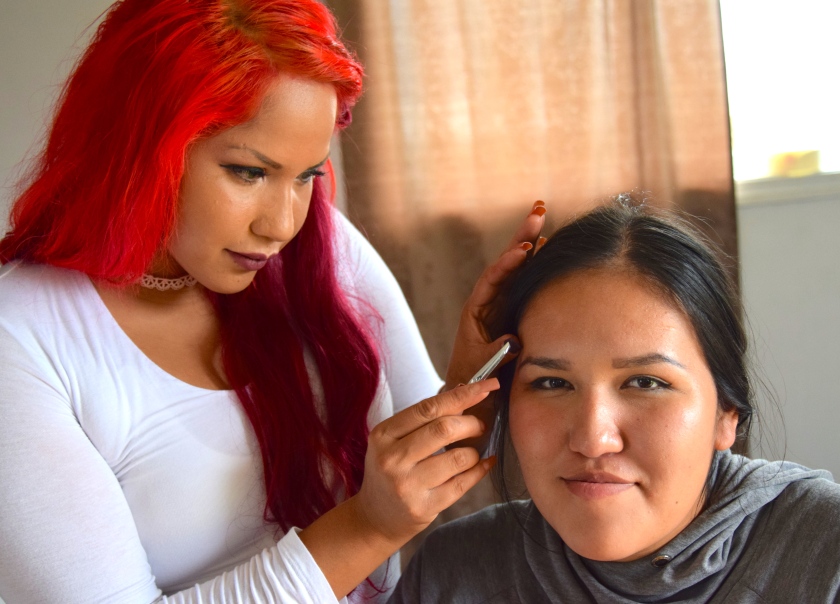
By Karli Zschogner
[LONG READ]
A one-way, rural Nova Scotian road is not the most obvious place to train and learn the critical value of solidarity in accompanying Indigenous Guatemalans threatened for speaking up for justice, land and human rights.
“Once you know, you can’t unknow,” says Kathryn Anderson, founder of the Breaking The Silence Maritimes Guatemala Solidarity Network (BTS), as she describes how the voluntary network began answering the call for partnership 31 years ago from Guatemalans facing persecution. She holds a hand-sculpted bust of a Mayan elder which she says was given to her by a Guatemalan refugee in Canada.
As the tides flow in and out, draining the salty ocean waters, the Tatamagouche Centre is my home for the next six days. Tatamagouche, deriving from the Mi’kmaq term Taqmakujk, or “barred across the entrance with sand,” is connected to both the Mi’kmaq First Nations and French Acadians.
Having learned the expressed value of learning and maintaining Anishinaabemowin while living in Naotkamegwanning First Nation, I take comfort in a Maritime map labelling the regions’ original names in Mi’kmaq, which were placed at the entrance of the multicultural and multi-spiritual centre. I am encouraged by it, viewing it as a de-colonial symbol and educational act towards the First Nations territory I am in.
However, the push for re-education of traditional Indigenous knowledge and language is not limited to Canada, nor just a talking piece for 2019 as the United Nations International Year of Indigenous Language. Guatemalan survivors, such as Jesús Tecú Osorio, a BTS partner, have channelled their trauma to fill the gaps that their government continues to ignore and deny.
While continued devaluation of the Mayan including refusals from government to support, one of Jesús’ efforts was the creation of a land-based school, to counter the harms and degradation of Mayan language, knowledge and culture. Students, with a newly built greenhouse and learning cultural teachings around weaving, can graduate as a ‘rural wellbeing technician’.
Coming in contact with BTS while living in Nova Scotia and having previously covered a news story on their fundraiser coffee partnership, I also craved connections to those who have shared a similar connection to Guatemalans as well as the heart-wrenching but empowering stories of Indigenous Mayan resilience, which I had documented in 2015. When I saw the network had opened up a cooperant program, I immediately applied.
Not a business, nor a not-for-profit, or a charity, the volunteer-based network has been responding to the needs and issues defined by their partners, and supporting not with money but in supporting them in taking charge of their own lives. In explanation of their solidarity, the group has stuck with the following quote as their motto:
“If you have come here to help me, you are wasting your time…but if you come because your liberation is bound up with mine, then let us work together,” spoken by Lilla Watson an Australian Aboriginal activist and organizer.
The network, BTS, evolved in the 1980s at the height of the country’s 36-year internal armed conflict and genocide against the Mayan Indigenous and any who opposed the government. While advocating for the Government of Canada to condemn the violence, the network began offering accompaniment alongside Canadian advocacy for Guatemalans to ensure their safe passage back home in testifying.

Spiraled red yarn becomes our interactive historical reference to Guatemala as we take turns laying out dates of major struggles and powerful milestones. Not starting from colonial contact as most colonial history lessons do, we start at the seed of Mayan creation story and their age of great civilizations including their leaps in architecture, agriculture, mathematics, and astronomy starting in 250 AD.
We take turns unscrambling pieces of their history and providing any reflections we have. “Land is central to everything,” says the cooperant program leader, a Guatemalan. “So much it gives to the world, but at the expense of others.”
During the activity, we broke down the international involvement not just from governments but the role powerful corporations play in exploitation and conflict. For the internal conflict, it was the control of land and labour under the United Fruit Company beginning in the 1930s, to the dehumanization of those who challenge or opposed. In this case, it was the use of the term ‘Communist’ during the Cold War’s fear-mongering.
Flashbacks of emotion come to me during the training of my trip to Guatemala, including the feelings I had experienced while meeting the collective of female Mayan weavers who had lost their husbands, and touring morgues home to those lost in gangs and murdered women.
Despite accomplished milestones such as having the first openly Indigenous lesbian politician and successful guilty trials to those sexually violent towards Mayan women, BTS facilitators give examples of their partners who continue to experience slander, unwarranted arrests, death threats and murders including under multiple large Canadian mining projects.
These examples remain the reason why BTS’ partners continue to seek a notable international presence regarding reporting and advocacy in Guatemala and, in Canada, organizing tours for Guatemalans to share their stories and political advocacy.
“I want the companies every day to think of us,” says BTS Coordinator Lisa Rankin who’s permanently working in Guatemala. She says the main part of her advocacy is pressuring investors and companies.
The network’s partnership allows organizers like survivor Jesús more more safely continue his legal clinic, another created initiative, which is currently serving survivors in testifying in ongoing national and international cases related to the genocide and ongoing land claims.
In Tatamagouche, we video call in with a Guatemalan survivor Jeremias Tecu, now working in New Brunswick in refugee settlement. He shares with us the horror of the polarizing violence and the pain of losing so many family members and his determination to advocacy in justice and healing.
“I have an obligation to the world,” he says, speaking of his position as a Guatemalan genocide survivor.

BTS also partners with a group called Instituto Mesoamericano de Permacultura (IMAP). They are currently working towards maintaining traditional Mayan knowledge through permaculture farming as local sustainable solutions to climate change. One of their unique initiatives, a library seed bank, is intended to preserve near extinct species of edible plant resources. To compliment their work, they also utilize fish-farming within the same area for later use as plant fertilizer.
The fourth Guatemalan partner is a committee of small farmers known as Comité Campesino del Altiplano (CCDA), a group within the business-agriculture sector that are helping take back traditional knowledge. With growing momentum due to some of their members being elected into Congress, their direct advocacy for their own Indigenous and land rights remain deeply at risk with threats of assassination.
With respect of processes of truth and reconciliation commissions, I have learned that without the process of first laying out the truths, the full history, there cannot be open doors for justice and reconciliation. Systemic issues do not fix themselves, especially when the government denies or does not hold value in education and justice processes. It is not surprising that the most successful initiatives come at the grassroots, from the ground up.
Stripping down of what accompaniment and cooperant support is, I am learning that especially when fear is used as a tactic to prevent action, it is to help people to feel not alone and having someone’s’ back. As I think of all the unsolved missing and murdered women cases in Guatemala and Canada, being there as offering moral or technical support is critical in documenting in non-bias observation as a last witness in preventing impunity and seeking justice.
When I am moved, upset, shocked or reflecting on something I have learned firsthand of in news, what is often missing is the ‘calls to action’ or what we can do about it. In discussion of examples of concrete ways to make a difference, we watched a video clip of former BTS delegate Hannah Martin directly speaking in the House of Commons to Prime Minister Justin Trudeau at an event called Daughters of the Vote, calling for accountability of the damages of Canadian mining companies she visited.
Hannah was then video called in to us, introducing herself as a Mi’kmaq youth of Tatamagouche and having lived in Millbrook First Nation.
“Collectively, we are not much different,” she says in our video chat in reference to Indigenous peoples in Canada and Guatemala. She says, however, being an Indigenous Canadian living and learning from Indigenous Guatemalans, she sat with realizing her own form of privilege as a Canadian citizen.
Currently a student at McMaster University in Hamilton, ON for Indigenous Studies, she expresses solidarity for her as “using our privilege as Canadians on a global scale”.
Since my return from Guatemala and the personal experiences shared with me in 2015, I also began realizing the privilege, including as a Canadian citizen including access to services, technology and other products from around the world, and most critically, being able to use your voice without a constant fear of death.
It is why I’ve become more conscious to what I buy and the business behind it. I have learned that as a buyer, there is power in choice and as an act of solidarity. Even through the challenge of living on a small budget, I have learned that this power of choice remains, whether selectively buying items that may on the surface be more expensive, or choosing between wants and needs.
In a reflection exercise, trainers were asked to pick a quote that resonated with us most and draw something to symbolize its theme of solidarity. I chose the one below:
“To love. To be loved. To never forget your own insignificance. To never get used to the unspeakable violence & vulgar disparity of life around you. To seek joy in the saddest places. To pursue beauty to its lair. To never simplify what is complicated or complicate what is simple. To respect strength, never power. Above all, to watch. To try and understand. To never look away. And never, never, to forget.”
– Indian author Arundhati Roy
Karli Zschogner is a guest contributor. She is the former journalism trainer for Naotkamegwanning First Nation, from September 2018 to March 2019.















